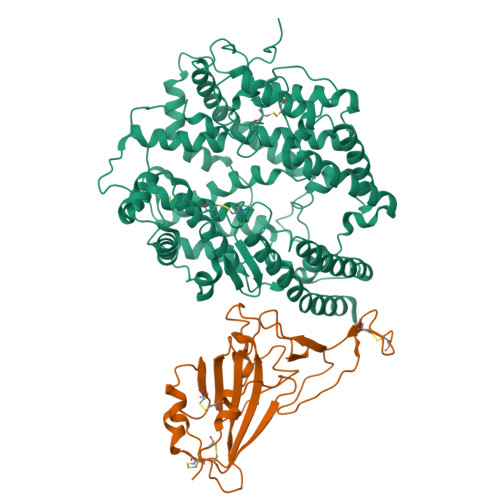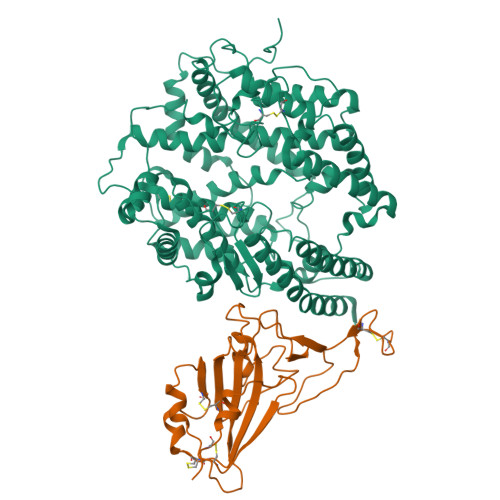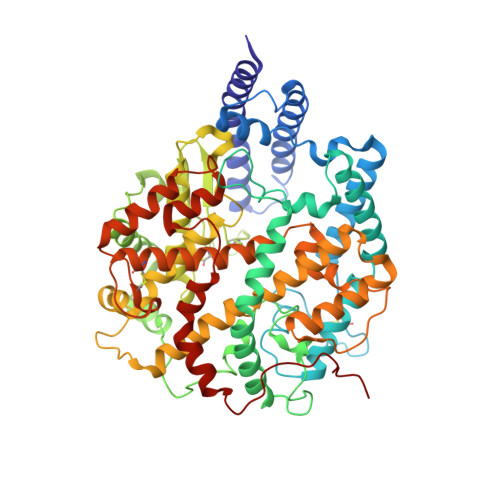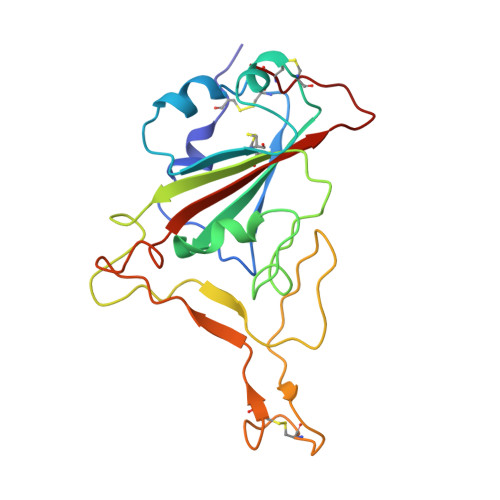Self-assembled superstructure alleviates air-water interface effect in cryo-EM.
Zheng, L., Xu, J., Wang, W., Gao, X., Zhao, C., Guo, W., Sun, L., Cheng, H., Meng, F., Chen, B., Sun, W., Jia, X., Zhou, X., Wu, K., Liu, Z., Ding, F., Liu, N., Wang, H.W., Peng, H.(2024) Nat Commun 15: 7300-7300
- PubMed: 39181869
- DOI: https://doi.org/10.1038/s41467-024-51696-w
- Primary Citation of Related Structures:
8HRI, 8HRJ, 8HRK, 8HRL, 8HRM, 8HRN, 8HRU - PubMed Abstract:
Cryo-electron microscopy (cryo-EM) has been widely used to reveal the structures of proteins at atomic resolution. One key challenge is that almost all proteins are predominantly adsorbed to the air-water interface during standard cryo-EM specimen preparation. The interaction of proteins with air-water interface will significantly impede the success of reconstruction and achievable resolution. Here, we highlight the critical role of impenetrable surfactant monolayers in passivating the air-water interface problems, and develop a robust effective method for high-resolution cryo-EM analysis, by using the superstructure GSAMs which comprises surfactant self-assembled monolayers (SAMs) and graphene membrane. The GSAMs works well in enriching the orientations and improving particle utilization ratio of multiple proteins, facilitating the 3.3-Å resolution reconstruction of a 100-kDa protein complex (ACE2-RBD), which shows strong preferential orientation using traditional specimen preparation protocol. Additionally, we demonstrate that GSAMs enables the successful determinations of small proteins (<100 kDa) at near-atomic resolution. This study expands the understanding of SAMs and provides a key to better control the interaction of protein with air-water interface.
Organizational Affiliation:
Beijing National Laboratory for Molecular Sciences, College of Chemistry and Molecular Engineering, Peking University, Beijing, 100871, China.

















